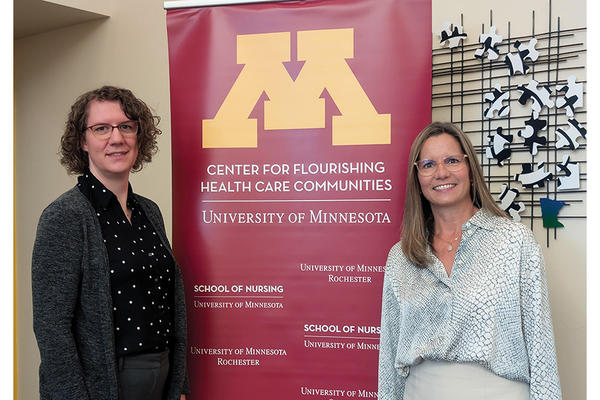New Universal Nursing Management Codes Can Enlighten Staffing and Clinical Environment Decisions
July 18, 2015
A new standardized data set of more than 100 coded and measurable terms is now available that enables health care systems to objectively evaluate and compare the effectiveness of their nursing care, staffing and facilities – unit-by-unit and shift-by-shift. The Nursing Management Minimum Data Set supports administrative decision making that aligns the needs of the patient with the skills and knowledge of nursing providers., and has recently been added to an internationally adopted vocabulary standard called Logical Observation Identifies Names and Codes (LOINC®) that is developed and maintained by the Regenstrief Institute, Inc.
Connie White Delaney, PhD, RN, FAAN, FACMI Professor & Dean
Researchers at the University of Minnesota and the University of Iowa developed and tested the codes over many years before their acceptance in June into LOINC, a database and universal standard for identifying sharable and comparable health and intervention observations.
“Today, LOINC is used in more than 168 countries so that clinical systems can share, aggregate, and understand the health data they receive from many sources” said Daniel Vreeman, P.T., D.P.T, M.Sc., associate director of terminology services at the Regenstrief Institute and associate research professor of medicine at the Indiana University School of Medicine. "We are delighted to have added the NMMDS variables into LOINC because they provide important data for decision making and outcomes management in nursing."
Bonnie Westra, PhD, RN, FAAN, FACMI Associate Professor
"Health care systems are being held accountable for their patients’ health, timely recovery and costs," said Connie White Delaney, Dean of the University of Minnesota School of Nursing. "Data analysis revealed by applying these codes can answer questions about how to best align patient needs with resources. Nursing care is estimated to account for 70 percent of health care costs, so getting it right matters a great deal to providing highly effective, affordable care."
How can the data be used? Example: Two hospitals want to compare the incidence of catheter-associated urinary tract infections with their staffing complement. They use different electronic health records, scheduling, and human resource systems. However, inside those systems they both use the international LOINC vocabulary standard for reporting the following for their staff: staff mix, education, turnover, satisfaction, years of experience, and certifications. Because they used the same standard for these variables in the NMMDS, they are now able to compare care and outcomes.
About the Regenstrief Institute and LOINC
The Regenstrief Institute is a distinguished medical research organization dedicated to improving the quality and effectiveness of health care. The institute is the home of internationally recognized centers of excellence in biomedical and public health informatics, aging, and health services and health systems research. Institute investigators are faculty members of the Indiana University School of Medicine, other schools at Indiana University-Purdue University Indianapolis, or Purdue University.
LOINC was initiated in 1994 by the Regenstrief Institute and developed by Regenstrief and the LOINC committee because there was a growing trend to send clinical data electronically from laboratories and other data producers to hospitals, physician's offices, and payers who use the data for clinical care and management purposes. LOINC was created to provide a common language (set of identifiers, names, and codes) for clinical and laboratory observations. The current version of LOINC includes more than 76,000 terms, including laboratory tests, clinical measures like vital signs and anthropomorphic measures, clinical document titles, standardized survey instruments and more.
Contacts:
Barb Schlaefer, School of Nursing communications director, 612-626-9079
Daniel Vreeman , P.T., D.P.T, M.Sc., associate director of terminology services at the Regenstrief Institute and associate research professor of medicine at the Indiana University School of Medicine


